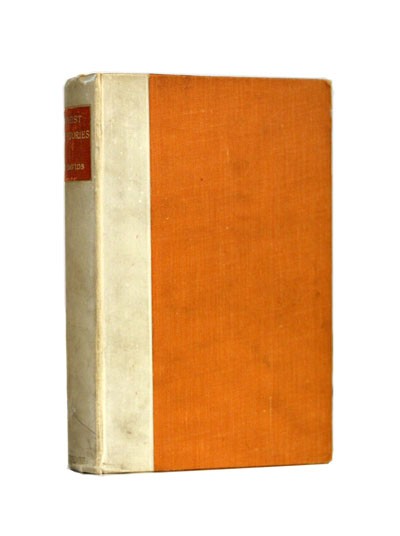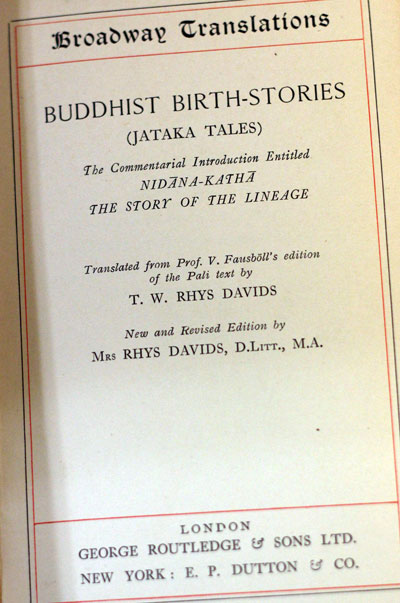One of the earliest and very few rigorous scholarly translations of the Jataka Tales. A lot of later books have taken directly from the translations here.
From the Preface:
This essay and the following translation were 1st published in 1880 as a volume in Trubner’s Oriental Series. That volume contained, further, the beginning of a much longer work, namely the translation of the so-called Jataka. This is a collection of upwards of 550 folk-lore tales which forms part of the Buddhist canonical scriptures. The tales are in prose, each explaining a much more ancient poem of two or more lines. The allusions in the verses cannot be understood without the explanation given in the prose. Over
and above this explanation there is added to each story an episode said to be from the life of the founder of what is now called Buddhism. Some thing has occurred which the founder likens to an episode in the long past, when, in a former life the actors in the present episode and he himself were engaged. In this way a moral, something like those in our fables, is drawn. At the same time the immensely long evolution in the full life or lives of all men and in particular of such a superman as the founder is brought out.
The original volume has long been out of print. The writer, passing on to other pioneer work, handed over the long task of the Jataka translation to the late Professor E. B. Cowell. Under his editorship and up to his death the work was carried out by a group of translators and was issued during 1895-1907 by the Cambridge University Press. Naturally the remainder of the original volume herewith re-issued could not take its proper place at the head of the complete translation.
It has long been out of print. But neither the introductory essay nor the translation of the Nidana-katha or Jataka introductory chronicle has been superseded. Hence it has seemed good to the house of Routledge, in taking up the mantle of the house of Triibner, to issue a fresh edition of both. Hereby a service is rendered to all inquirers into the history of Indian literature, and especially into a phase of it which has held much significance in the Buddhist tradition and is of no small interest for the general mind of to-day.
The introductory narrative is chiefly concerned with the two great milestones in his career : the milestone when the conscious will to become a helper of men first awoke, and the milestone when that will had reached such perfection that he could become such a helper.
This narrative came to be called the Discourse of the Nidana. In translating Nidana by lineage, a verbal difficulty has been solved more by the spirit of the contents than by the letter of the title. The word nidana is usually rendered by cause, source, base, origin. None of these would convey a meaning to English readers. In Buddhist perspective the narrative reveals a long, long line of ancestors. These are not ancestors after the flesh . These are not ancestors by what we reckon as heredity. We merge the individual in the family, the tribe, the race. In Buddhism the line of the individual stands out much more strongly, in startling incongruity with its church’s rejection of the man.
The Nidana Katha, as forming a running commentary on the Buddhavamsa (chronicle of the Buddhas), itself a canonical book, is a later comer into the Canon. In its treatment of the Buddha-legend and the story of the life of the very real founder had by that time become legendary it occupies a midway house between the biographical fragments in Vinaya and chief Nikayas, and those later more highly embroidered lives of which there are not a few. The nimbus and the rays and the beauty of the figure have come in. But the narrative is still relatively simple.



